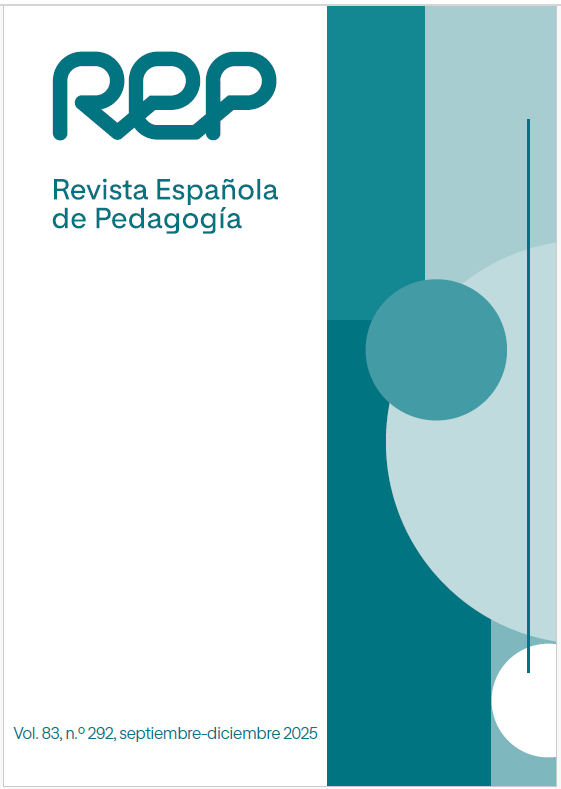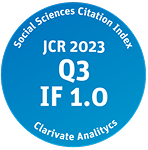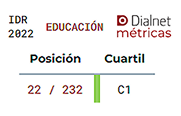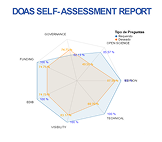Espacios de aprendizaje innovadores para la universidad del futuro. Revisión bibliométrica (2011-2024)
DOI:
https://doi.org/10.9781/rep.2025.388Palabras clave:
Espacios físicos innovadores, entornos virtuales de aprendizaje, tecnología educativa, aula del futuro, enseñanza superior, tendencia educativaResumen
En los últimos años, se ha producido un aumento de espacios de aprendizaje innovadores en el contexto universitario, convirtiéndose en una de las principales tendencias nacionales e internacionales. Este estudio tiene como objetivo analizar la producción científica sobre la influencia de estos espacios en el proceso de enseñanza y aprendizaje universitario entre 2011 y 2024. Se ha realizado una revisión bibliométrica y sistemática siguiendo las directrices PRISMA, identificando 56 artículos indexados en Web of Science con un alto índice de concordancia (k = 0.97). Se llevaron a cabo análisis descriptivos y análisis clúster de cocitación de referencias, fuentes y autores. Los resultados muestran un crecimiento exponencial de estudios centrados en estos espacios, principalmente en España. Asimismo, se revela una estructura clara en cuatro bloques temáticos: a) fundamentos teóricos, b) impacto, c) innovaciones pedagógicas y tecnologías educativas y d) contexto social. En su caso, las fuentes se organizan en cuatro clústeres sobre a) enseñanza y el aprendizaje en educación superior, b) tecnología en educación, c) innovación pedagógica y d) educación en ciencias de la salud. La red de cocitaciones de autores revela cuatro clústeres principales: a) enfoques innovadores, b) tecnología educativa, c) enfoque intercultural y d) aprendizaje experiencial. Se concluye que los espacios de aprendizaje innovadores son una parte fundamental, influyendo positivamente en el proceso de enseñanza y aprendizaje universitario.
Descargas
Citas
Al-Lal, M. F. (2021). Aula inteligente: definición y evolución. Didasc@ lia: Didáctica y Educación, 12(2), 96-118.
Araiza-Vázquez, M. J., Figueroa-Garza, F. G., y Pedraza-Sánchez, E. Y. (2023). Estimación del rendimiento de los estudiantes en una experiencia de aprendizaje móvil. Formación Universitaria, 16(1), 33-44. http://dx.doi.org/10.4067/S0718-50062023000100033
Baque, P. G. C., y Marcillo, C. (2020). Estrategias pedagógicas innovadoras en entornos virtuales de aprendizaje. Dominio de las Ciencias, 6(3), 56-77. http://dx.doi.org/10.23857/dc.v6i3.1274
Bautista, G., Escofet, A., y López, M. (2019). Diseño y validación de un instrumento para medir las dimensiones ambiental, pedagógica y digital del aula. Revista Mexicana de Investigación Educativa, 24(83), 1055-1075.
Benade, L. (2019). Flexible Learning Spaces: Inclusive by Design? New Zealand Journal of Educational Studies, 54, 53-68. https://doi.org/10.1007/s40841-019-00127-2
Bolliger, D. U., y Halupa, C. (2018). Online student perceptions of engagement, transactional distance, and outcomes. Distance Education, 39(3), 299-316. https://doi.org/10.1080/01587919.2018.1476845
Carvalho, L., y Yeoman, P. (2021). Performativity of materials in learning: The learning-whole in action. International Journal of Educational Research, 10(1), 28-42. https://doi.org/10.7821/naer.2021.1.627
Cleveland, B., y Fisher, K. (2014). The evaluation of physical learning environments: A critical review of the literature. Learning Environments Research, 17(1), 1-28. https://doi.org/10.1007/s10984-013-9149-3
Dede, C. (2010). Comparing frameworks for 21st century skills. En J. Bellanca y R. Brandt (eds.), 21st century skills: Rethinking how students learn (pp. 51-76). Solution Tree Press.
Desbrow, J. M., y Domínguez, S. C. (2020). El espacio como elemento facilitador del aprendizaje y de atención a la diversidad. Revista de Estilos de Aprendizaje, 13(25), 1-3. https://doi.org/10.55777/rea.v13i25.2092
Díaz, L. A. (2022). El Aula del Futuro en la Europa del siglo XXI: de la teoría y la práctica, de lo digital y lo físico. En Pedagogía de las cosas: quiebras de la educación de hoy (pp. 287-293). Ediciones Octaedro.
Divyashree, M. (2018). Flipped Classroom-An Innovative Methodology for Effective Teaching Learning Process. Asian Journal of Management, 9(1), 451-456. http://dx.doi.org/10.5958/2321-5763.2018.00070.7
Düzenli, T., Alpak, E., Çiğdem, A., y Tarakçı Eren, E. (2018). The Effect of Studios on Learning in Design Education. Journal of History Culture and Art Research, 7(2), 191-204. http://dx.doi.org/10.7596/taksad.v7i2.1392
Engel Rocamora, A., y Coll Salvador, C. (2022). Entornos híbridos de enseñanza y aprendizaje para promover la personalización del aprendizaje. RIED-Revista Iberoamericana de Educación a Distancia, 25(1), 225-242. https://doi.org/10.5944/ried.25.1.31489
Fullan, M., Quinn, J., McEachen, J., Gardner, M., y Drummy, M. (2021). Sumergirse en el aprendizaje profundo: Herramientas atractivas. Ediciones Morata.
González-Zamar, M. D., y Abad-Segura, E. (2020). Diseño del espacio educativo universitario y su impacto en el proceso académico: análisis de tendencias. Revista de Estilos de Aprendizaje, 13(25), 1-13.
Granito, V. J., y Santana, M. E. (2016). Psychology of Learning Spaces: Impact on Teaching and Learning. Journal of Learning Spaces, 5(1), 1-8.
Johnson, L., Adams Becker, S., Estrada, V., y Freeman, A. (2016). NMC/CoSN Horizon Report: 2016 K-12 Edition. The New Media Consortium. https://files.eric.ed.gov/fulltext/ED570463.pdf
Kellermeyer, L., Harnke, B., y Knight, S. (2018). Covidence and Rayyan. Journal of the Medical Library Association, 106(4), 580.
Knezek, G., Christensen, R., y Furuta, T. (2019). Validation of a teacher educator technology competencies survey. Journal of Technology and Teacher Education, 27(4), 465-498.
Lave, J., y Wenger, E. (1991). Situated learning: Legitimate peripheral participation. Cambridge University Press. https://doi.org/10.1017/CBO9780511815355.
Lozano-Díaz, A., Fernández-Prados, J. S., Figueredo Canosa, V., y Martínez Martínez, A. M. (2020). Impactos del confinamiento por el COVID-19 entre universitarios: Satisfacción Vital, Resiliencia y Capital Social Online. International Journal of Sociology of Education, Special Issue: COVID-19 Crisis and Socioeducative Inequalities and Strategies to Overcome them, 79-104.
Mahat, M., Bradbeer, C., Byers, T., e Imms, W. (2018). Innovative Learning Environments and Teacher Change: Defining key concepts. University of Melbourne, LEaRN. http://www.iletc.com.au/publications/reports
Navarro-González, I. (2023). La educación infantil en los países nórdicos: iniciativas innovadoras. IE Revista de Investigación Educativa de la REDIECH, 14, e1911. https://doi.org/10.33010/ie_rie_rediech.v14i0.1911
OECD (2015). Students, computers and learning: Making the connection. OECD Publishing. https://doi.org/10.1787/9789264239555-en
Page, M. J., McKenzie, J. E., Bossuyt, P. M., Boutron, I., Hoffmann, T. C., y Mulrow, C. D. (2021). The PRISMA 2020 statement: an updated guideline for reporting systematic reviews. British Medical Journal, 372(71), 1-9. https://doi.org/10.1136/bmj.n71
Parody, L. M., Leiva, J. J., y Santos-Villalba, M. (2022). El Diseño Universal para el aprendizaje en la Formación Digital del Profesorado desde una mirada pedagógica inclusiva. Revista Latinoamericana de Educación Inclusiva, 16(2), 109-123. http://dx.doi.org/10.4067/S0718-73782022000200109
Piaget, J. (1977). The development of thought: Equilibration of cognitive structures. Viking Press.
Radcliffe, D. (2008). A pedagogy-space-technology (PST) framework for designing and evaluating learning places. En D. Radcliffe, H. Wilson, D. Powell y B. Tibbetts (eds.), Learning spaces in higher education: Positive outcomes by design (pp. 9-16). The University of Queensland.
Rovai, A. P. (2018). Building a sense of community at a distance: What remains important in the digital age? Journal of Education and Learning, 7(2), 103-112. https://doi.org/10.4000/dms.2685
Shevchenko, L., Makhynia, N., Polishchuk, G., Sotska, H., Koval, V., y Grygorenko, T. (2021). The Training of Future Teachers for Innovative Teaching Activities. Postmodern Openings, 12(1), 21-37. https://doi.org/10.18662/po/12.1/243
Tena, R., y Carrera, N. (2020). The Future Classroom Lab as a Framework of Development for Competency-and Project-based Learning. Revista Mexicana de Investigación Educativa, 25(85), 449-468.
Uman, L. S. (2011). Systematic Reviews and Meta-Analyses. Journal of the Canadian Academy of Child & Adolescent Psychiatry, 20(1), 57-59. https://doi.org/10.1007/BF03305643
Urrútia, G., y Bonfill, X. (2010). Declaración PRISMA: una propuesta para mejorar la publicación de revisiones sistemáticas y metaanálisis. Medicina Clínica, 135(11), 507-511. https://doi.org/10.1016/j.medcli.2010.01.015
Vite, H. R. (2014). Ambientes de aprendizaje. Ciencia Huasteca Boletín Científico de la Escuela Superior de Huejutla, 2(4) 1-7. https://doi.org/10.29057/esh.v2i4.1069
Vygotsky, L. S. (1978). Mind in society: The development of higher psychological processes. Harvard University Press.
Weiss, A. (2019). Infraestructura educativa y su incidencia en el proceso de enseñanza y aprendizaje. Revista Paraguaya de Educación, 8(1), 75-87.
Yang, J., Weiying, H. P., y Huang, R. (2018). Evaluation of smart classroom from the perspective of infusing technology into pedagogy. Smart Learning Environments, 58(20), 1-11. https://doi.org/10.1186/s40561-018-0070-1
Descargas
Publicado
-
Resumen555
-
PDF150
-
PDF (English)186
Cómo citar
Número
Sección
Licencia
Derechos de autor 2025 Eva Jiménez-García, Judit Ruíz-Lázaro, María Huetos-Domínguez

Esta obra está bajo una licencia internacional Creative Commons Atribución-NoComercial 4.0.

